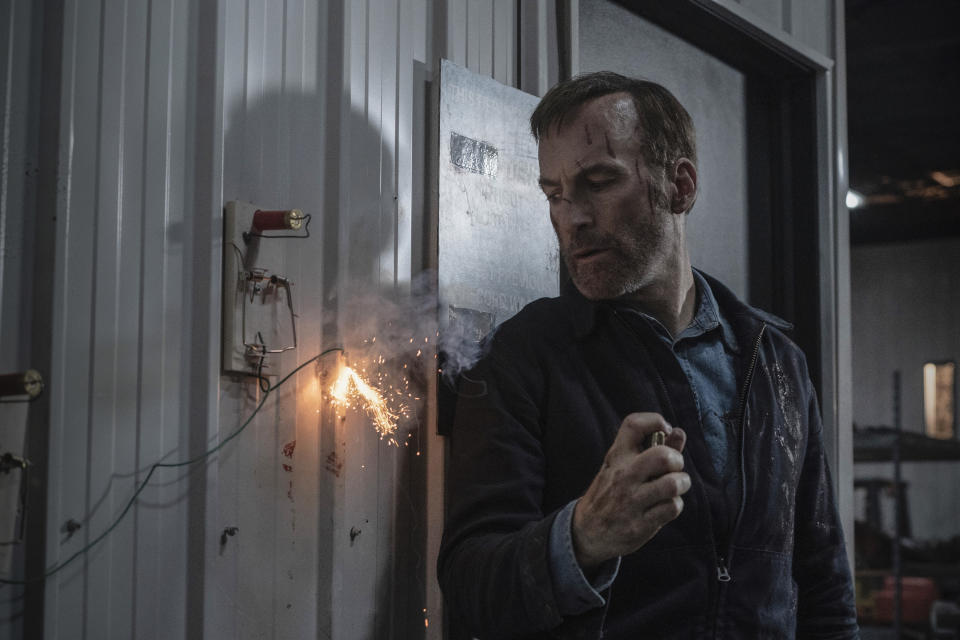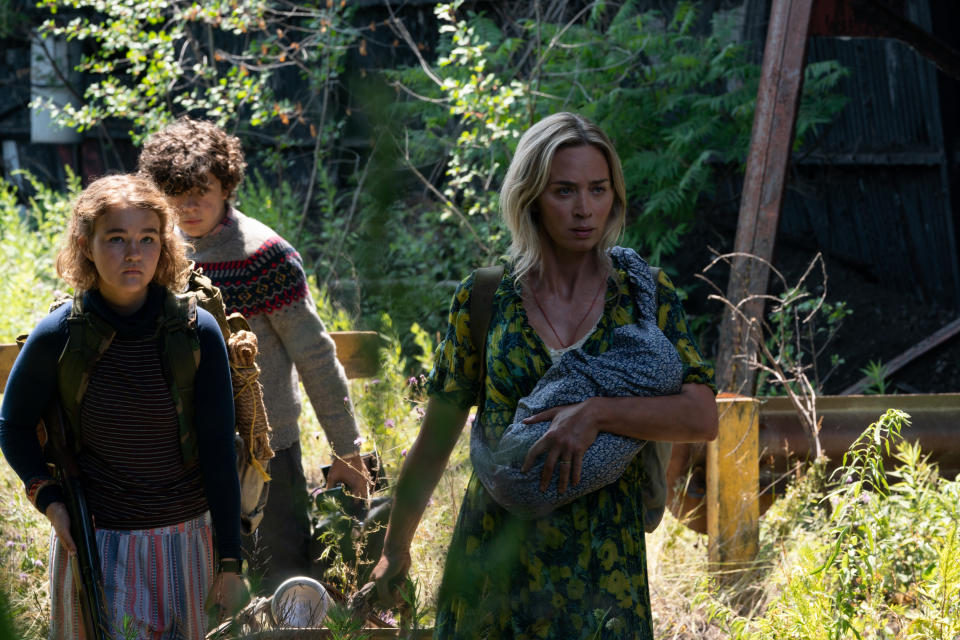A Guide to How Each Studio Now Handles Theatrical Windows

This week, Paramount opens “Snake Eyes,” an origin story for their “G.I. Joe” franchise, and Universal debuts “Old,” M. Night Shyamalan’s graphic novel adaptation.
In theaters, that is. Unlike the recent “Space Jam: A New Legacy” (Warner Bros.) or “Black Widow” (Disney), these two won’t have immediate home availability.
More from IndieWire
'Black Widow' Adds More Platforms -- and More Revenue -- While 'Pig' Stays Strong
'Free Guy' Breaks Out with $28.4 Million as 'Suicide Squad' Collapses in its Second Week
Confused? You’re not alone. Uncertainty about home access to new releases is now another problem theaters face.
There’s no easy solution to this.
In the ancient times of February 2020, studio movies opened in theaters first, then were exclusive for at least 75 days before home release (streaming, video on demand, Blu-Rays/DVDs). That no longer exists. But what has sprung up is a patchwork quilt of options. And for the consumer, it can be tricky to discern.
Studios are brands of sorts, but they generate little public awareness in terms of release policies. And beyond this, unlike in the previous era of video/DVD et al. releases, the means of the post-theater delivery now can vary widely.
Adding to the morass, two distinct options exist, each usually exclusive at first (though this is changing). And the battle between them for dominance ranks close to that between studios and theaters as key to what the future holds. Add to that the big-money stakes battle among streaming companies to stand out.
Broadly speaking, two options exist. The first is Premium Video on Demand. PVOD titles are rentals or sometimes digital downloads (EST, electronic sell through) that are paid for as stand-alone items via cable or online platforms like Amazon, Vudu et al. with a standard price of $19.99 (it ranges higher and lower sometimes). Subscriber-based streamers such as Netflix, Disney+, and HBO Max normally offer titles at no extra charge beyond the monthly or annual fee.
With revenues from these largely unreported — unlike with theater grosses — gauging success in part comes from seeing what actions studios take. At the moment, the best gauge of what is working is following studio decisions in choosing among their various home options.
At the moment, here’s how the major studios each handle home release:

Allen Fraser/Unive
Universal
When theaters closed last year, Universal immediately pushed their PVOD options. They transitioned just released films like “The Invisible Man,” “The Hunt,” as well as Focus Features’ “Emma” to PVOD by March 20. Then they released “Trolls World Tour” exclusively on PVOD instead of waiting for theaters, which started a trend with other studios doing the same via various platforms.
Before then, PVOD was mostly a two-week option ahead of standard ($5.99 price) release, which paralleled DVD/Blu-Ray retails availability. It started around the 75 day mark after release. But strong results, in the wake of the pandemic, led to Universal announcing they would henceforth release all films via some sort of PVOD option.
Initially in a deal with #1 exhibitor AMC, Universal agreed to release films on PVOD as early as 17 days after opening in theaters (31 if the first domestic weekend gross exceeded $50 million). This included some reduction of film rental terms and ability for some exhibitors with their own on-line platforms to provide these films themselves.
That has mostly been the pattern since (including for Focus Features, owned by Universal). It has included lucrative PVOD showings for “The Croods: A New Age,” “Promising Young Woman,” and “Nobody.”
One big exception though: The “Boss Baby” sequel showed up on Peacock, NBC Universal’s new streamer, free for subscribers the same day as it hit theaters. That raises the specter of the alternative option ahead, particularly when over 3,600 theaters still played the film.
As for “Old”? Sources from outside of Universal in a position to know were told “Old,” unexpectedly, will have a traditional home entertainment release, with no PVOD on the normal schedule. So even the most rigidly followed plan has exceptions.
Warner Bros.
Warners went beyond Universal when it announced that its films, starting with “Wonder Woman 1984” but last all through the entirety of 2021, would debut on HBO Max (thus free for subscribers) day-and-date with theatrical. Despite that, “Godzilla vs. Kong” grossed $100 million to become the fourth biggest grossing theatrical release this year.
The revised policy for 2022 is that HBO Max showings will wait until after 45 days in theaters. The wording of the agreement (initially with Cineworld, which owns Regal Cinemas) implies the window covers other home options. Buried in the announcement was the mention of “certain provisions,” undefined. But it also said multi-year, suggesting the deal would last at least through 2023.
But until January, important 2021 titles like “The Suicide Squad,” “Dune,” and “The Matrix 4” will be shown from the start on HBO Max. Meanwhile, the company is touting growth among subscribers (in the U.S., up 2.8 million in the second quarter). It also said that they plan to make about 10 original feature titles for play on HBO Max next year.
Disney
In recent years, the juggernaut among studios, even before acquiring 20th Century Fox, Disney dominated box office. So their position has been the most critical.
With Disney+ fighting Netflix worldwide to become the leading streamer, Disney has favored that platform to an extent that suggests that short-term revenue, much less the survival of theaters, is not their main concern.
Theirs has been the most complicated strategy, with top films showing in multiple ways domestically, including:
Only on Disney+, free for subscribers: “Soul,” “Luca”
Only on Disney +, with a $29.99 fee for subscribers: “Mulan”
In theaters and on Disney+ for $29.99: “Raya and the Last Dragon,” “Cruella,” “Black Widow,” “Jungle Cruise”
In theaters only: “Free Guy,” “Shang-Chi and the Legend of the Ten Rings”
Confused? The best guess is there is method to the madness, with the studio crunching results for a range of titles. They have made no announcements about the release strategy for any later titles. Perhaps the harsh statement from theater trade group NATO blaming the quick decline of “Black Widow” on its PVOD showings was an attempt to influence their plans.

Jonny Cournoyer
Paramount
Since theaters have fully reopened, Paramount has released one film — “A Quiet Place Part II.” This comes after selling off multiple viable titles. They recently debuted their own streamer, Paramount Plus.
Paramount has hinted at a 45-day window as a standard for most releases, with Paramount Plus added after 45 days. Theaters anticipate this should include “Snake Eyes” (which would then stream in early September). AUGUST UPDATE: After a lackluster theatrical return, the film debuted on PVOD on August 17, 25 days after theaters opened, but ahead of Paramount Plus.
Sony and Lionsgate
Sony has delayed its PVOD dates longer than most, with no specifically announced policy. “Monster Hunter” and “The Unholy” both waited around seven weeks. “Peter Rabbit: The Runaway,” released on June 11 and remains theater exclusive.
Lionsgate released “Spiral” on PVOD after three weekends, “Chaos Walking” came after four. “The Hitman’s Wife’s Bodyguard” just became available after five weekends. Seems like a work in progress.
Best of IndieWire
Cannes 2021 Deals: The Complete List of Festival Acquisitions
New Movies: Release Calendar for August 13, Plus Where to Watch the Latest Films
'The Green Knight,' 'Stillwater,' and 'Pig' Continue to Rouse a Changing Specialty Box Office
Sign up for Indiewire's Newsletter. For the latest news, follow us on Facebook, Twitter, and Instagram.

